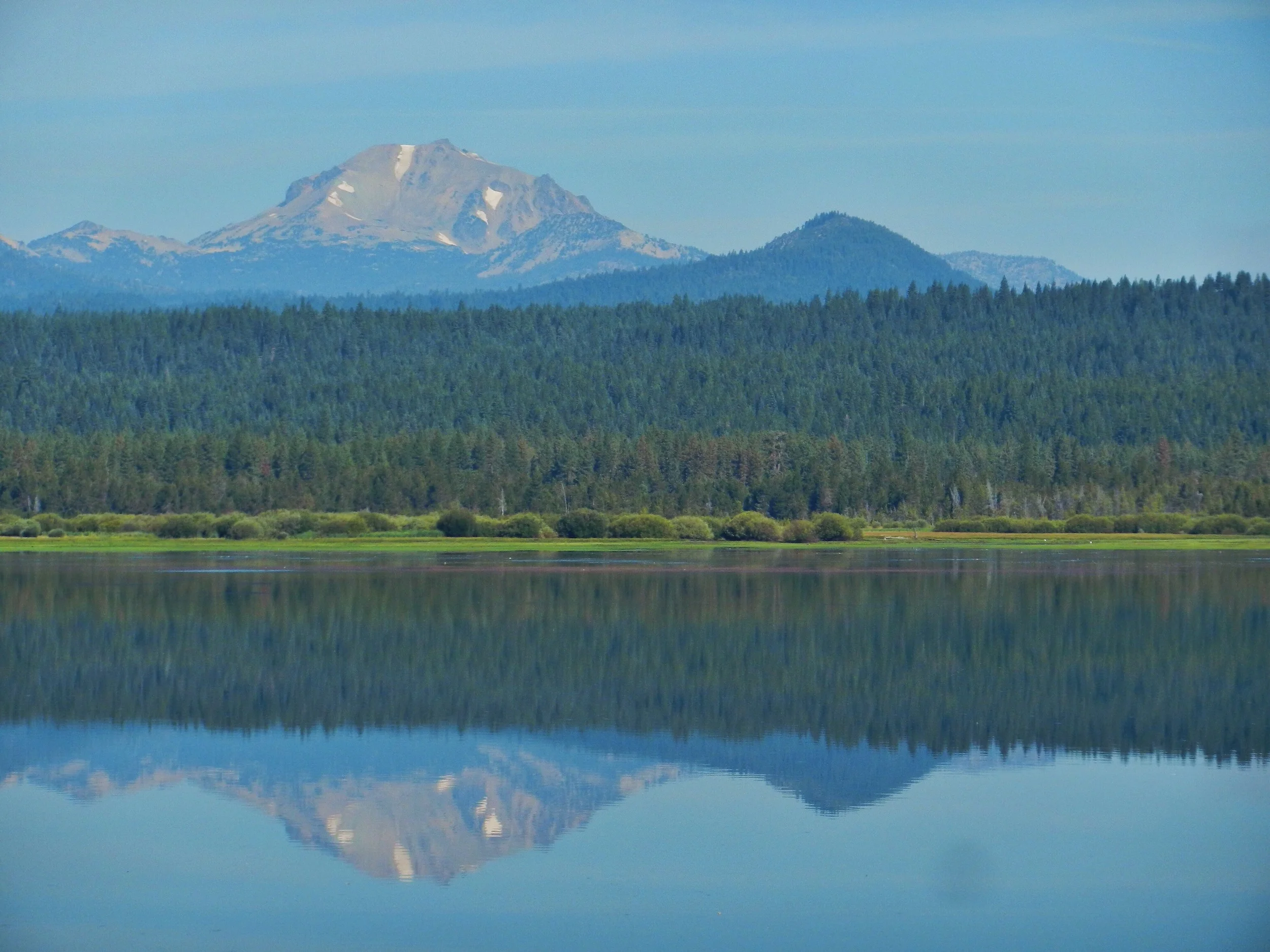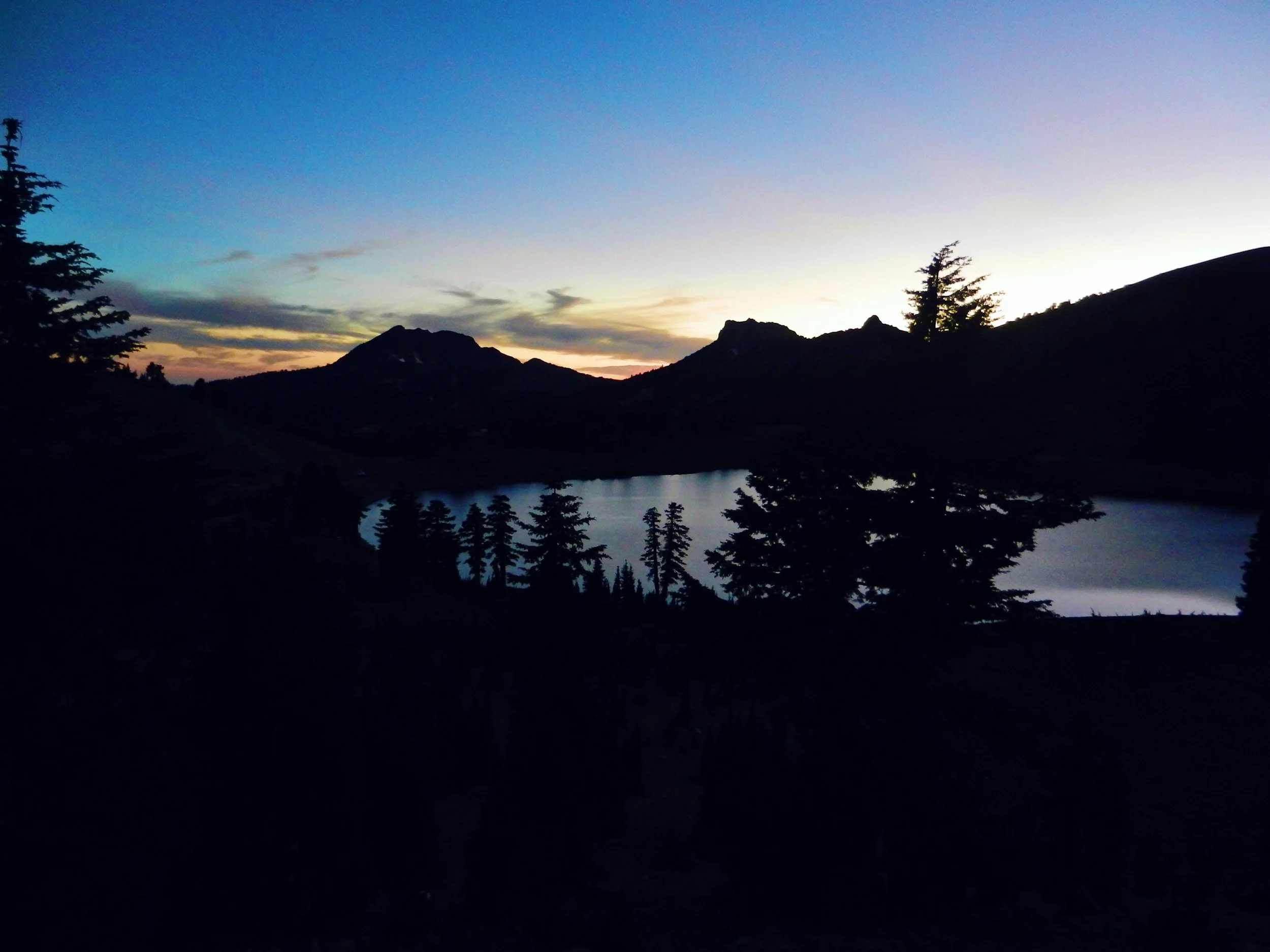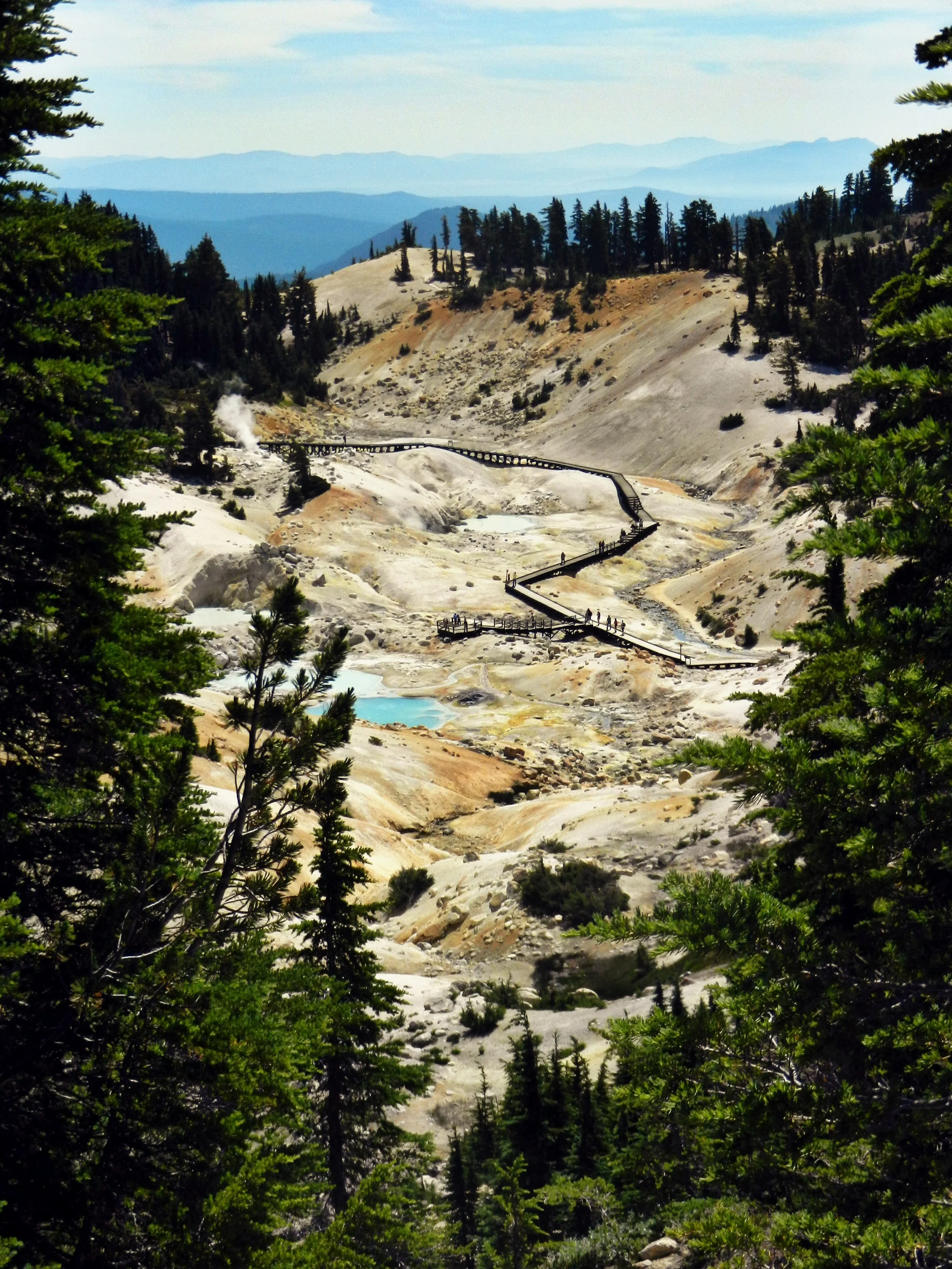







Your Custom Text Here
Park Number: 36/63
First Visited: August 3, 2012
I first tried visiting Lassen, a lesser-known California park, when it was still socked in by lingering Cascade Mountain snow, Lassen Peak (at 10,457 ft.) being the southern-most volcano in this range. I stood at the entrance, then denied the glories of the national park in spring, with closure signs mocking me back to the interstate and furthering my trip north to Crater Lake.
Over a year later I returned, this time with the benedictions of August, wildflowers greeting me and Stellar’s jays inviting my father to add their visage to his birdwatching collection. Water boiled from the earth at Sulphur Works and then further yet at Bumpass Hell, a boardwalk showing me colors often unknown to landlocked mountains: the tamarack of trees but in stone, the greens of good copper gone bad, the turquoise of exotic ocean islands. Evergreens stood witness to my evolving state of awe.
Geothermal activity may be the most astonishing part of the park, but always, from a distance, is dormant Lassen Peak, the largest plug dome volcano in the world. It oversees its eponymous place of protection, a park containing every type of volcano on the planet: plug dome, shield, cinder cone, and strato. This rarity alone deserves its national park designation and, also, your consideration for a visit.
The Lassen area was a meeting point for at least four American Indian groups: Atsugewi, Yana, Yahi, and Maidu.
Related Articles:
Park Number: 36/63
First Visited: August 3, 2012
I first tried visiting Lassen, a lesser-known California park, when it was still socked in by lingering Cascade Mountain snow, Lassen Peak (at 10,457 ft.) being the southern-most volcano in this range. I stood at the entrance, then denied the glories of the national park in spring, with closure signs mocking me back to the interstate and furthering my trip north to Crater Lake.
Over a year later I returned, this time with the benedictions of August, wildflowers greeting me and Stellar’s jays inviting my father to add their visage to his birdwatching collection. Water boiled from the earth at Sulphur Works and then further yet at Bumpass Hell, a boardwalk showing me colors often unknown to landlocked mountains: the tamarack of trees but in stone, the greens of good copper gone bad, the turquoise of exotic ocean islands. Evergreens stood witness to my evolving state of awe.
Geothermal activity may be the most astonishing part of the park, but always, from a distance, is dormant Lassen Peak, the largest plug dome volcano in the world. It oversees its eponymous place of protection, a park containing every type of volcano on the planet: plug dome, shield, cinder cone, and strato. This rarity alone deserves its national park designation and, also, your consideration for a visit.
The Lassen area was a meeting point for at least four American Indian groups: Atsugewi, Yana, Yahi, and Maidu.
Related Articles: